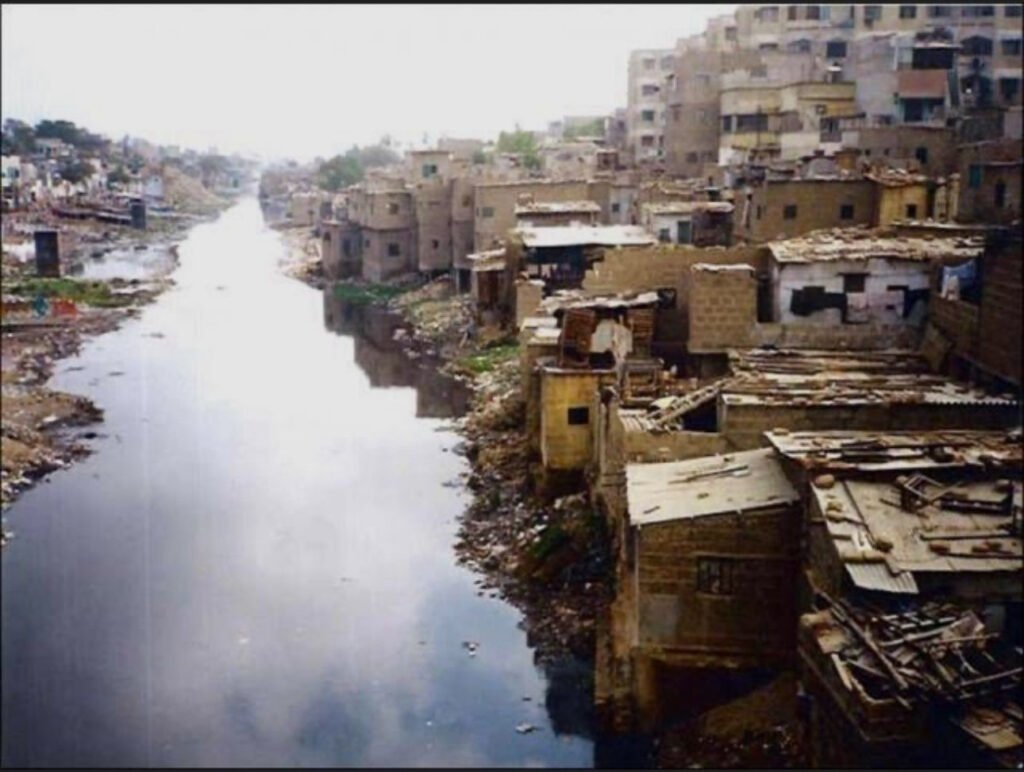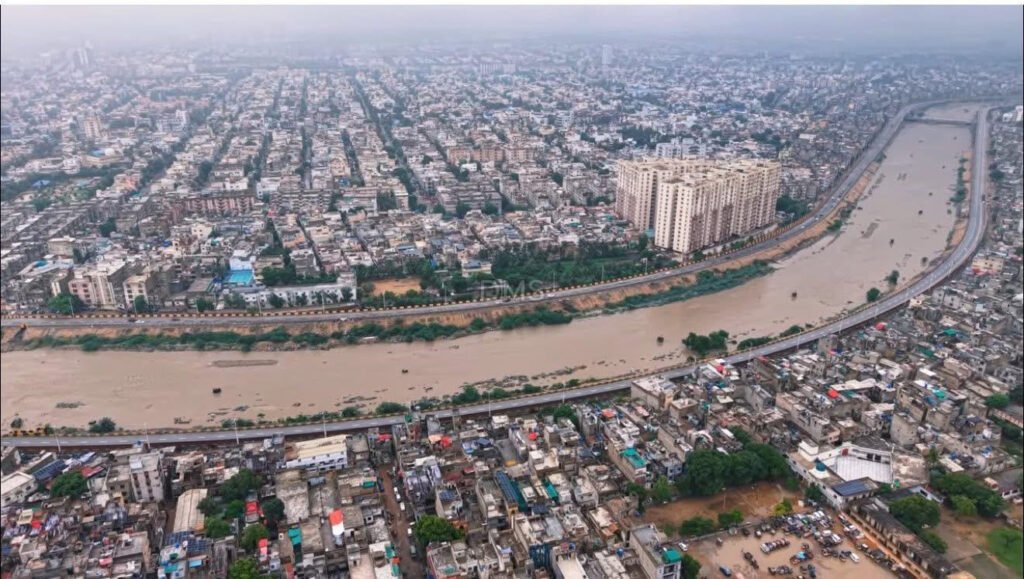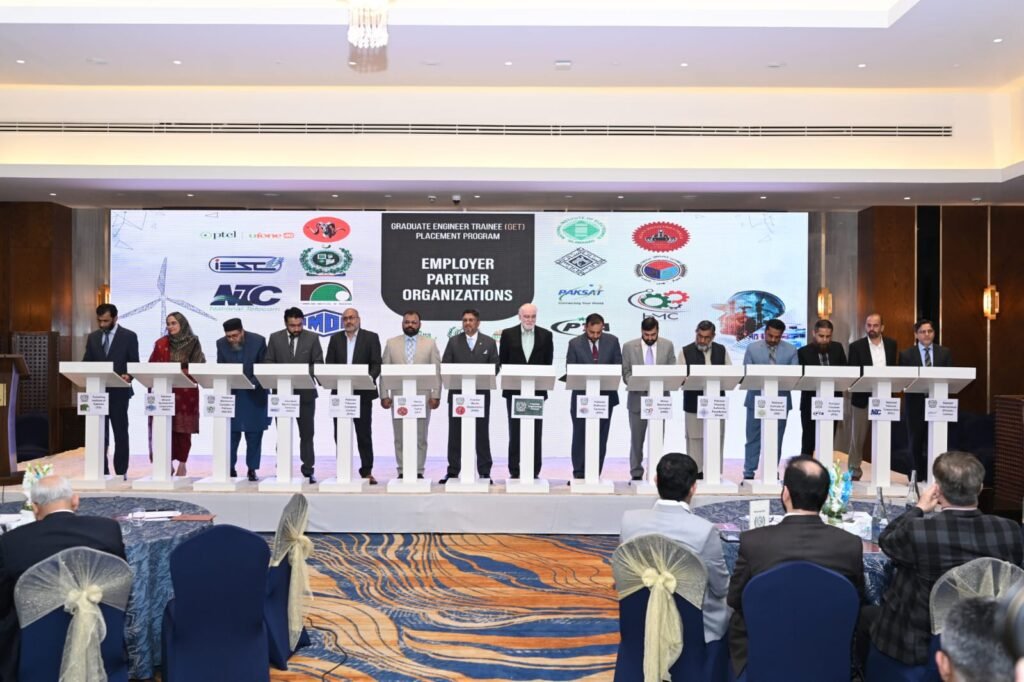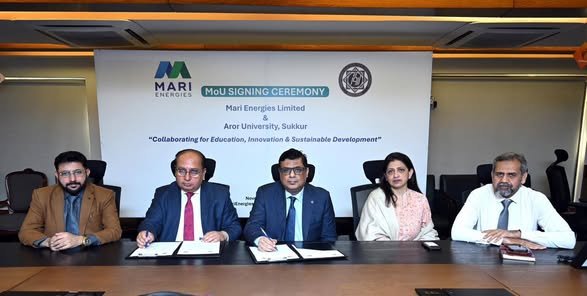PAKISTAN

Karachi, the city of lights and relentless ambition, hides a secret beneath its bustling streets—a river that once breathed life into the city but now struggles under the weight of human neglect. The Lyari River, a 50-kilometer stretch from the hills of the Kirthar Range to the Arabian Sea, has been reduced from a natural artery of Karachi to a stagnant symbol of urban failure.
A River Once Alive
In the days before Karachi became a teeming metropolis, the Lyari River was the city’s lifeline. Seasonal yet steady, it nurtured villages, supported farming, and provided freshwater for communities along its banks. During the British era, it marked the natural boundary of the city’s early settlements, its clear waters teeming with fish that fed both families and commerce.
Before Partition, the riverbanks were home to Hindu-majority neighborhoods and the Baloch community; after 1947, the Lyari area became a refuge for migrants, its cultural fabric evolving while the river continued to sustain life. Historical accounts speak of families crossing the river in small boats during monsoon swells and children playing along its grassy banks. In short, it was more than a waterway—it was Karachi’s living pulse.

The Fall: From Stream to Sewer
The 1970s marked the beginning of the river’s decline. Rapid industrialization, unchecked urban expansion, and poor planning choked the Lyari. Factories and domestic drains discharged untreated waste, and illegal encroachments narrowed the river’s flow. By the 1980s, its once-clear waters had become a conduit for sewage and industrial effluents. Today, over 90% of its flow consists of untreated waste, with rainwater joining only during the monsoon.
Floods became a grim reality. The catastrophic 1977 floods claimed over 200 lives, with damages exceeding five billion rupees. Pollution has turned fertile riverbanks barren, contaminated groundwater, and exposed nearby communities to epidemics, respiratory ailments, and skin diseases. Even the coastal areas are feeling the impact, as plastic and chemical waste wash into the Arabian Sea.


Encroachment and Urban Pressure
The Lyari River now flows through some of Karachi’s most crowded neighborhoods: Sohrab Goth, Liaquatabad, Nazimabad, Golimar, Lyari Town, Garden, Mauripur, and finally the port area near Kiamari. Along this course, illegal housing, shops, and factories block the natural flow. During the monsoon, this negligence turns deadly—overflowing waters flood streets and homes, leaving the city’s most vulnerable residents exposed to disease and destruction.
Even efforts at mitigation have been piecemeal. The Lyari Expressway, completed in 2018, transformed 17 kilometers of the river’s banks into a modern traffic corridor, removing encroachments and symbolizing what vision and persistence can achieve. Yet nearly two-thirds of the river—33 kilometers from the Northern Bypass to Sohrab Goth—remains neglected, polluted, and encroached upon.
A Call to Action
Karachi cannot afford to ignore its lifeline any longer. Restoring the remaining stretch of the Lyari River is not merely an environmental imperative—it is a civic necessity. Authorities must remove illegal settlements, enforce pollution control, and expand protective infrastructure. Alongside this, modern roadways, similar to the Lyari Expressway, can provide much-needed urban mobility while safeguarding the river’s natural course.
The Lyari River’s revival is not just about water; it is about reclaiming Karachi’s soul. History shows it can be done. The Expressway stands as proof that vision, determination, and planning can reshape this city’s future. It is time to complete the mission—to restore the river in full, to bring life back to its banks, and to return this city’s forgotten lifeline to its people.
Karachi, built on ambition, cannot continue to live on neglect. The Lyari River deserves its redemption—before the city pays an even higher price.
Engr. Ramesh Raja is a civil engineer and managerial/ planning professional who also contributes as a freelance writer on technical matters. He may be reached at engineer.raja@gmail.com
READ MORE NEWS
Lyari River: Karachi’s Forgotten Lifeline
PAKISTAN By Raja Ramesh Karachi, the city of lights and relentless ambition, hides a secret…
PEC Signs MoUs with 14 Organizations for Graduate Engineer Trainee Program
PAKISTAN In a major step toward strengthening the professional competence of Pakistan’s young engineers, the…
Aror University, MariEnergies Sign MoU to Promote Education, Innovation and Sustainable Development
PAKISTAN Aror University of Art, Architecture, Design & Heritage, Sukkur has signed a Memorandum of…
Call for Reforms: PEC GB Member Seeks Representation, Allowances for Young Engineers
PAKISTAN “Representation of young engineers, Technical Allowance, and a formal Service Structure for Engineers should…
HUBCO Subsidiary’s Joint Venture Wins Provisional Rights to Four Onshore Exploration Blocks
PAKISTAN The Hub Power Company Limited (HUBCO) has announced that Prime International Oil and Gas…
Fatima Petroleum Subsidiary Wins Provisional Award for Two Offshore Exploration Blocks
PAKISTAN Fatima Petroleum Company Limited (FPCL), a wholly owned subsidiary of Fatima Group, has been…






